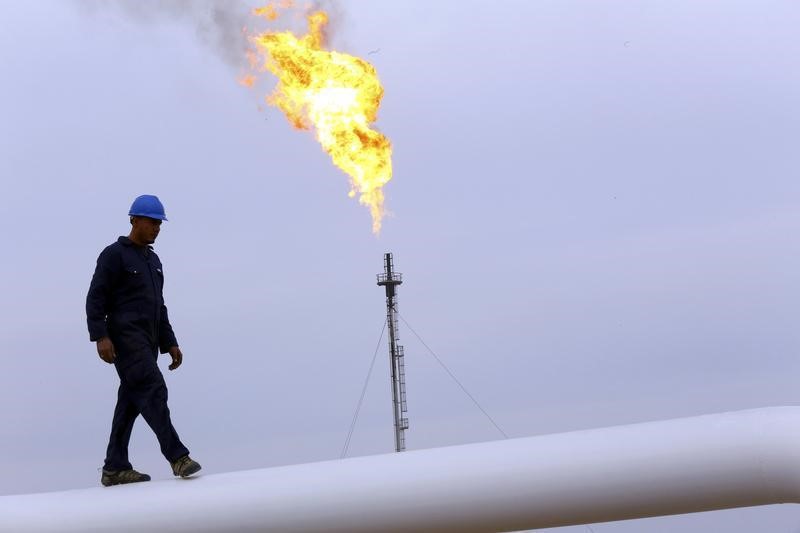By Barani Krishnan
Investing.com -- As the saying goes, “it is what it is”.
Crude prices fell Wednesday despite a rash of bullish headlines on U.S. supply-demand and Russian production that suggested the market run-up of the past two days may have been excessive to some.
New York-traded West Texas Intermediate, or WTI, crude settled at $72.97 per barrel, down 23 cents, or 0.3%. The U.S. crude benchmark rose a total of nearly 6% between Monday and Tuesday.
London-traded Brent crude settled at $78.28, down 37 cents, or 0.5%, after a cumulative gain of almost 4% in two previous sessions.
Wednesday’s slide in oil came despite government data showing weekly inventories of U.S. crude falling the most in four months amid a drop in gasoline stockpiles as well that indicated a pick up in energy demand ahead of the oncoming summer driving season.
Headlines out of Moscow, meanwhile, said Russian crude production fell by 300,000 barrels per day in the first three weeks of March, to 9.78 million barrels per day.
Russia’s “fire-sale” of its Urals crude — at $60 a barrel or lower, in compliance with Western sanctions related to the Ukraine war — has been cited as one of the reasons for the inability of the oil market to command a constantly high price for WTI and Brent. Major crude buyers such as India and China have sourced cheap supplies from Russia for months now and cut back on pricier supplies from other oil producers, that includes Saudi Arabia.
“The 300,000 bpd drop in Russian production falls short of the Kremlin’s previously announced plans to cut 500,000 barrels per day to help lift international prices,” said John Kilduff, partner at New York energy hedge fund Again Capital.
“But the Russian news can still be regarded as moderately bullish because it involves a cut. The EIA news is certainly bullish, so you have to ask yourself why oil ended lower today. The answer probably is that some felt the market had gone up a little much at the start of the week and needed to consolidate. It is what it is.”
Crude stockpiles fell by 7.489 barrels during the week ended March 24, the Washington-based Energy Information Administration, or EIA, said in its Weekly Petroleum Status Report.
Historical data maintained by the EIA showed it to be the largest U.S. crude draw in a week since late November. The draw also marks a reversal from almost three straight months of crude builds since December that resulted in an additional supply of 60M barrels.
Industry analysts tracked by Investing.com had forecast a build of 92,000 barrels instead for last week, versus the rise of 1.117M barrels seen during the previous week to March 17.
On the gasoline inventory front, the EIA reported a drawdown of 2.904M barrels against an expected drop of 1.617M barrels and the 6.4M-barrel decline in the previous week. Automotive fuel gasoline is the No. 1 U.S. fuel product.
With distillate stockpiles, there was a build of 281,000 barrels. Analysts had forecast a drop of 1.455M barrels versus the prior week’s deficit of 3.313M. Distillates, which are refined into heating oil, diesel for trucks, buses, trains and ships and fuel for jets, were originally the strongest demand component of the U.S. petroleum complex at the start of the year.
The summer driving season, which begins in earnest in late May and extends to late September at times, typically marks the heaviest demand period for motor fuels in the United States.
